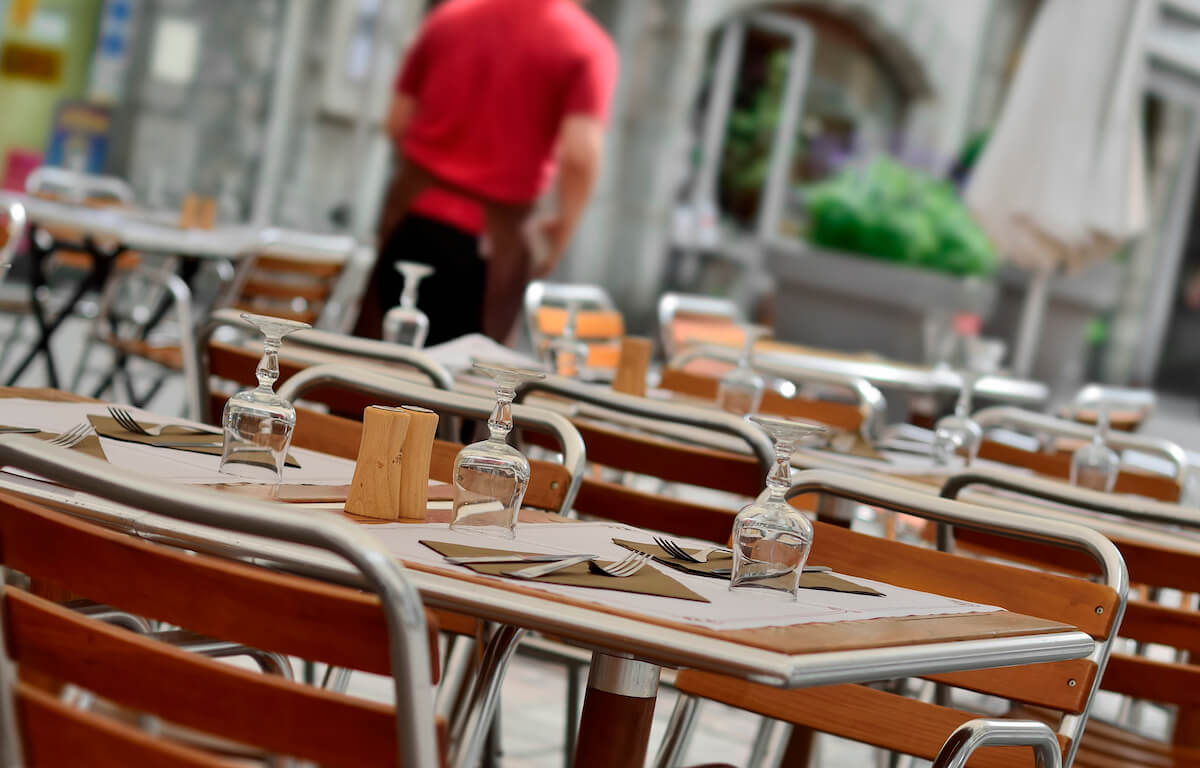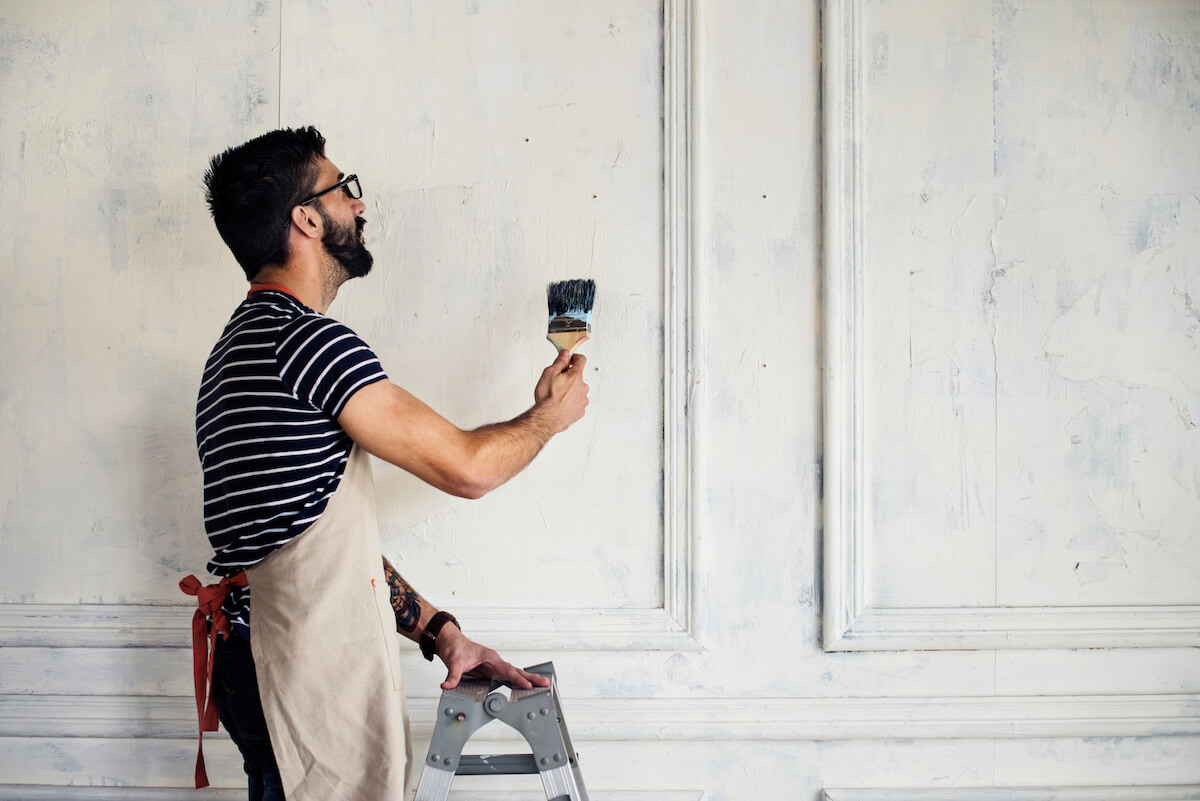Renovate restaurants right: Revamp, refresh, reward
Skip the article and turn takeaways into action by scheduling a call with our team.
If you’re here, there’s a good chance you’re thinking about what it takes to renovate restaurants. There are a lot of steps in this particular decision, and a restaurant renovation can mean anything from a new coat of paint to a top-to-bottom remodel. A whole spectrum of possibilities awaits when it comes to a restaurant renovation, which a restaurant owner will need to think methodically about.
Why might restaurateurs decide to renovate a restaurant in the first place? It could be to improve ambiance with a new look, upgrade equipment, create a better first impression, get more square feet out of the dining area, or even improve landscaping. Really, the limiting factors in a restaurant renovation are an owner’s imagination, budget, and time.
To help narrow things down, we’ll go through some important steps to consider when deciding to renovate a restaurant. Let’s begin by covering the most basic question of all.
Do you actually need to renovate?

Before you consider starting a renovation project, ask yourself if your restaurant really needs renovation. There’s a fine line between “nice-to-have” and “must-have” items at a restaurant.
Bear in mind that restaurant remodels, like many other renovation projects, usually take longer than expected and often go over budget. There’s a sense of mission creep that tends to accompany renovations: Once you start changing something, you notice how many other things could change, too.
So, we urge restaurateurs to seriously consider whether they must renovate or simply would like to. Here are a few reasons why a restaurateur may need to renovate:
- Damaged, moldy, or stained front-of-house (FOH) equipment in the dining room
- FOH seating that severely limits cash flow
- Interior design that drives away customers
- Back-of-house (BOH) equipment that does not meet legal requirements
- Essential BOH equipment that’s broken
If any of those items fit your situation, it’s time to renovate. If renovation isn’t essential, it can still be valuable—but everything has its tradeoffs. To figure out what’s most important, it’s time to talk.
Consult your manager, staff, and customers

In addition to a restaurateur’s own eyes and brain, managers, staff, and customers can provide valuable insight as to what could change for the better.
Servers will know the dining area better than anyone else, so they’ll be able to give constructive input on the floor plan. Are tables accessible to servers and customers? Is the seating arrangement attractive and comfortable? Is the restaurant interior design décor dated and in need of a revamp? Could the bar area be better used, if there is a bar area? If not, do you need a bar area?
Managers can provide similar insight, especially along the business side of things. Which seats are the most valuable, and what can be done to make other seats more valuable? What can be done to improve efficiency in the FOH and BOH?
Ask open-ended questions and listen to the answers. What your staff suggest may surprise you, but odds are your employees will have quite a few ideas.
If you’re opening a new restaurant and looking to renovate it, we recommend bringing along a trusted second set of eyes, like a potential manager or business partner. The restaurant business is a team sport.
It’s also a customer-oriented sport. In addition to your manager and staff, your customers can provide extremely valuable insight—whether they mean to or not.
Reviews of all varieties can be a gold mine of suggestions for improvement. That’s why we recommend taking customer reviews seriously. Yes, there are some trolls, but the vast majority of reviews are genuine.
Furthermore, parsing data—like what’s selling (or isn’t) or what areas of your restaurant are most popular—can help you decide what needs to change. If your most expensive item isn’t selling, for example, perhaps it’s worth reconsidering the price or the item. Does an area of your restaurant sit less patrons than other areas? Think about how to make it more enticing. Customers vote with their wallets and their feet, so pay close attention to what they do as well as what they say.
Decide how far you need to go

Once you’ve decided to renovate a restaurant, you’ll have to decide how much will change. Before you lift a finger to do anything beyond simple repainting, you’ll need a cost assessment that includes materials, labor, and income lost due to closure. And, of course, you’ll need an operating budget to help weed out unnecessary additions once you get going. Your budget will determine just how many of the nice-to-haves will stay on your to-do list or get axed. For reference, a renovation usually runs around $275,000 — but there are so many variables involved that it’s impossible to paint in such broad strokes.
You can essentially look at renovations in three levels:
- A cosmetic makeover
- A redesign
- A full overhaul
A cosmetic makeover
If there’s nothing functionally wrong with your restaurant but you want to give it a fresh new look, upgrading your restaurant look can go a long way. This revamp can include repainting, changing light fixtures, adding new artwork, redesigning your menu, or even swapping out tables and chairs. Generally, this makeover will be directed toward the FOH, unless you have an open-plan restaurant that gives diners a view of the kitchen. It does not require replacing major hardware, ripping up the floor, or tearing out walls, for example.
A redesign
A redesign goes for more of a fundamental altering of your FOH, often by way of changing seating arrangements, adding or subtracting sections, or replacing floors and ceilings. Redesigning your FOH can lead to increased cash flow by improving the way your seating works. Relying on restaurant metrics to see what can be improved to get the maximum dollar per square foot is a great way to start, and lots of good restaurant software will be able to provide you with data like that.
If you don’t have a keen eye for interior design, you can hire an interior designer or pay talented staff more to help with the task. The latter option also provides a signature style of authenticity that staff and customers can appreciate.
A full overhaul
If you realize that the whole darn thing needs to be redone, that’s when you’ll need a full overhaul. That can mean a complete redesign of FOH, BOH, or both, including replacing hardware and equipment and making an entirely new restaurant layout. These kinds of renovation plans are extensive and can be both cash- and time-consuming. But if a business sorely needs it, then it needs it.
There are some ways to mitigate lost revenue during a large renovation. For example, you can choose to renovate during your restaurant’s slow season—so probably not in the summer, for example. Let customers know how long you’ll be closed and when you expect to be open: Plaster the news all over social media and your website, and make sure the word is out there.
You can take this time to hype up your reopening on social media as well, and even plan a grand re-opening. Getting more attention afterward can help recoup lost revenue.
If your restaurant’s bottom line depends on deliveries, consider hiring some space in a commissary kitchen or opening a temporary ghost kitchen. This way, at least your deliveries can keep pace with orders and you won’t lose regulars.
Renovate restaurant software, too
So, maybe you need to touch up the paint, rearrange your seating, replace a fridge, or change out some tables. Maybe you need to tear apart the whole interior, or perhaps you need to do nothing at all. There’s no end to options in restaurant renovations.
However, whatever your restaurant needs and wherever you are in the renovation process, you’ll want to make sure you’ve got the most modern software possible. And that’s where we step in. Using a powerful FOH software suite like Yelp Guest Manager ensures that you’ve got all the tools you need to handle even the busiest FOH. Third-party delivery integrations? Check. Online waitlist, check-ins, and reservations? Absolutely. Syncing with top POS systems? You know it.
We understand how much work it is to run a restaurant, which is why we’re here to help. Reach out to us for a free demo to see if Guest Manager is right for you. Who knows—it may even be the star of your renovation.